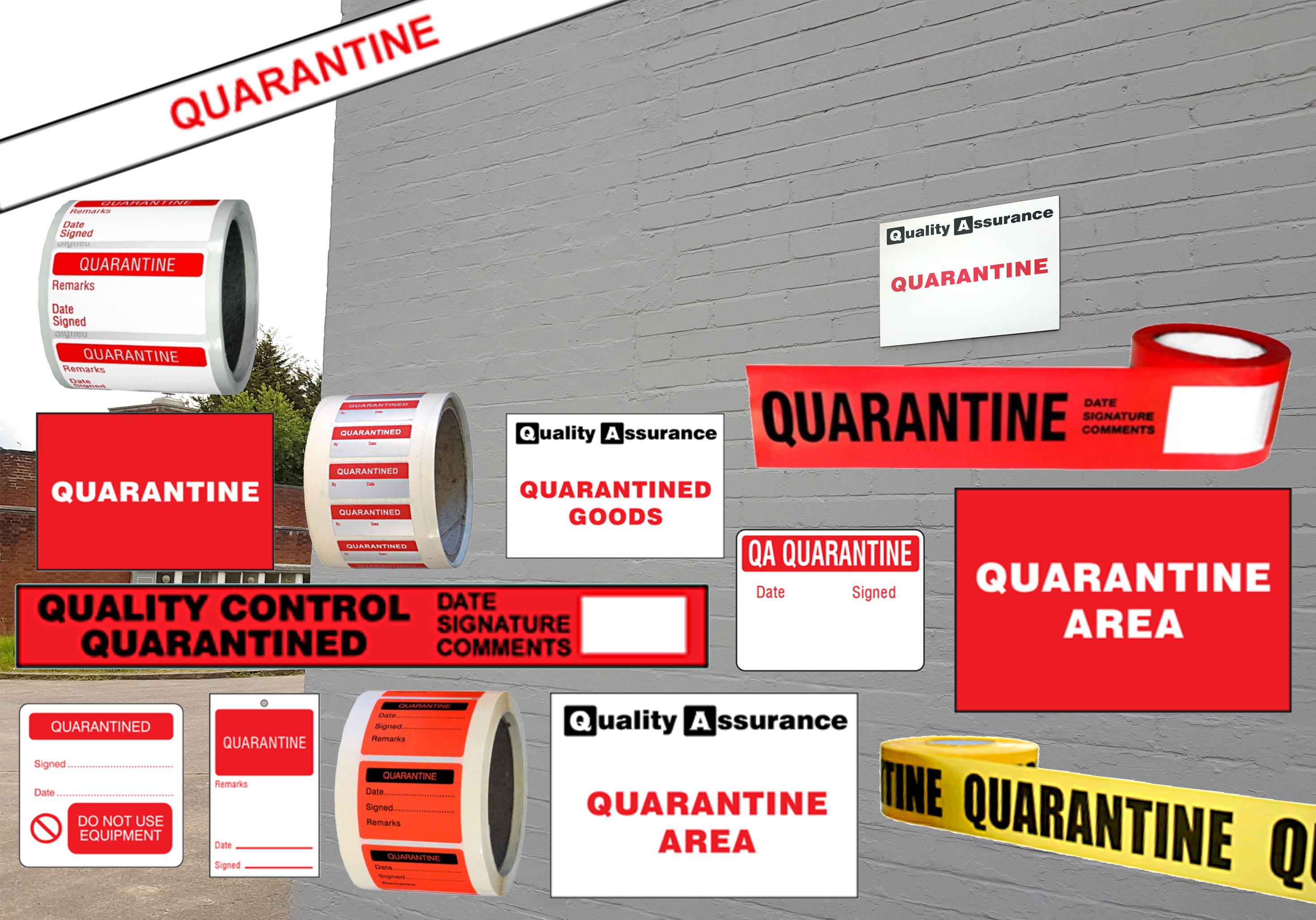
Quarantine has become a big topic since 2020. Previously, the term was reserved for labs and zombie films; now, it’s an everyday part of the world’s COVID response.
UK quarantine rules have frequently changed since the start of the pandemic, to mixed effects. However, one thing is clear with each iteration of quarantine guidelines: they’re difficult to enforce, and people need help following them.
Below, we’ll discuss how quarantine signs and labels have played an important part in the UK’s COVID response, as well as explain the impact these guidelines have had on public health.
What Were The UK’s Quarantine Guidelines?
UK quarantine rules mostly concerned travel. Most are familiar with the three-coloured tier-system the UK government used:
- Red list – On arrival, travellers needed to remain for 10 days in a quarantine hotel.
- Amber list – Quarantine was required for 10 days on arrival, as well as a PCR test on days two and eight. An additional test could be done on day five to end isolation early.
- Green list – A pre-departure test was needed on or before day two of their arrival in the UK, but there was no need to quarantine.
Fully vaccinated travellers did not need to take a COVID test before flying. However, upon arrival in the UK, nationals and green-listed travellers needed to take a lateral flow test.
Unvaccinated travellers faced more restrictions and needed to have a negative lateral flow or PCR test before travel, followed by 10 days of quarantine when they arrived back in the UK.
For non-travel, the UK used similar self-isolation rules throughout the pandemic. UK citizens needed to self-isolate if they had a:
- High temperature
- Continuous cough
- Change or loss of smell or taste
During self-isolation, you needed to receive a PCR test. If positive, it meant you had to self-isolate for 10 days.
How Did Quarantine Labels Help?
Early in the pandemic, when the virus was less understood, quarantine signs cordoned off areas where the infection was known to be. This was less common in the UK, but images from China early on showcased this in practice.
In the UK, quarantine labels and signs were most used in hospitals. COVID wards needed to be separate from other patients to contain the spread of the virus, meaning pathways, doors and other areas needed to be properly signposted.
Otherwise, quarantine labels helped transport tests from homes where possibly infected people were. This ensured those transporting the test knew it was unsafe and could take the necessary steps to safeguard themselves.
These labels were used at national drive-through testing centres, too.
Overall, quarantine signs and labels played an important part in letting people know about the possible presence of COVID-19, meaning quarantine could work effectively.
Did People Follow Quarantine Rules Properly?
The UK’s quarantine guidance was met with a mixed response. Research by the BBC pointed out that just 80% of people would self-isolate when returning from holiday. The true number, given survey bias, is likely lower than this.
Confusion around the rules coupled with uncertainty on their effectiveness hints that we need to do more, as an industry, to promote understanding of public health.
Could the UK government have done more to keep the public safe? Were signs and labels properly utilised throughout the pandemic? As the pandemic cools, these questions need answering.
Get Quarantine Labels Today
Quarantine labels have a variety of uses outside of COVID. If you work in a scientific or medical industry, then you likely need quarantine signs that last.
Discover our range of high-quality quarantine signs and labels and be sure to follow our Twitter for the latest in safety news.